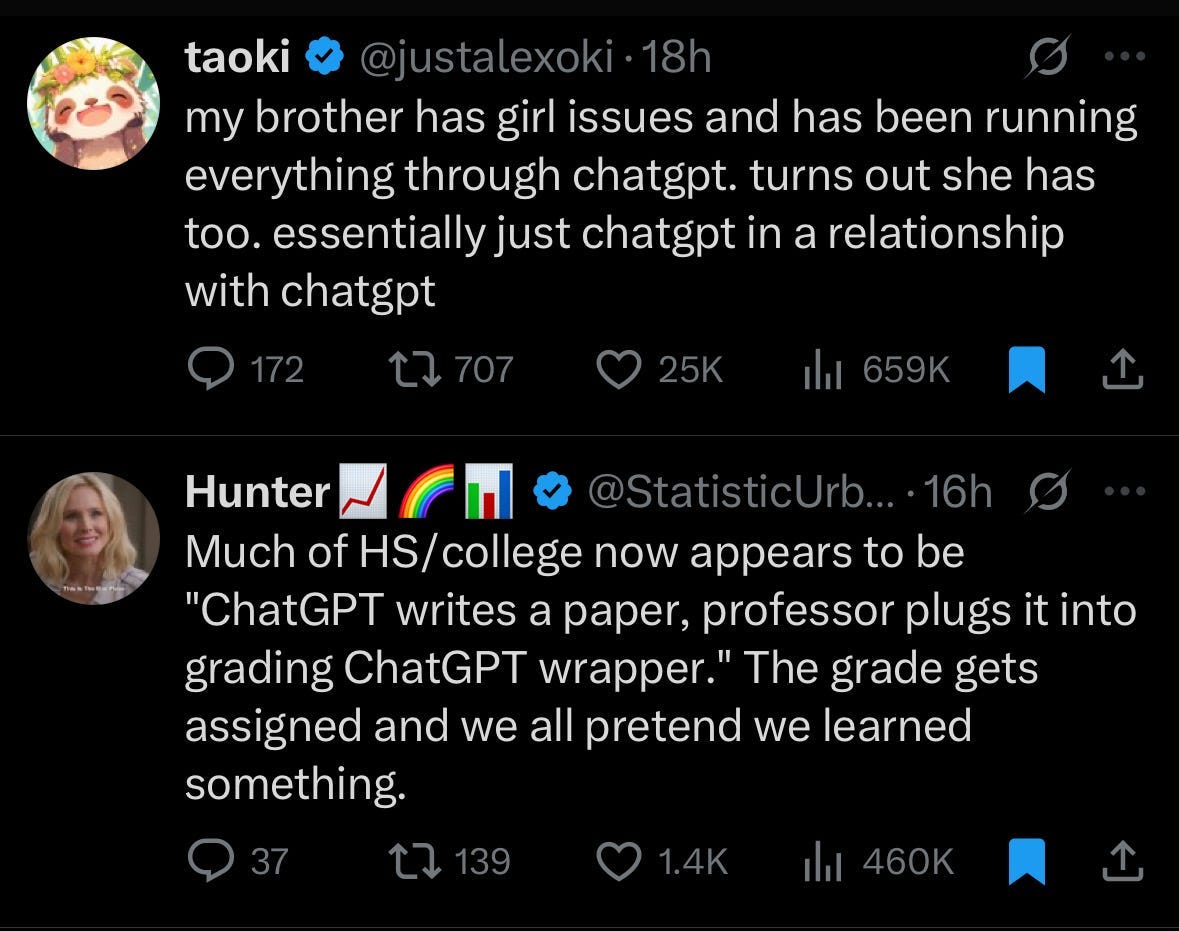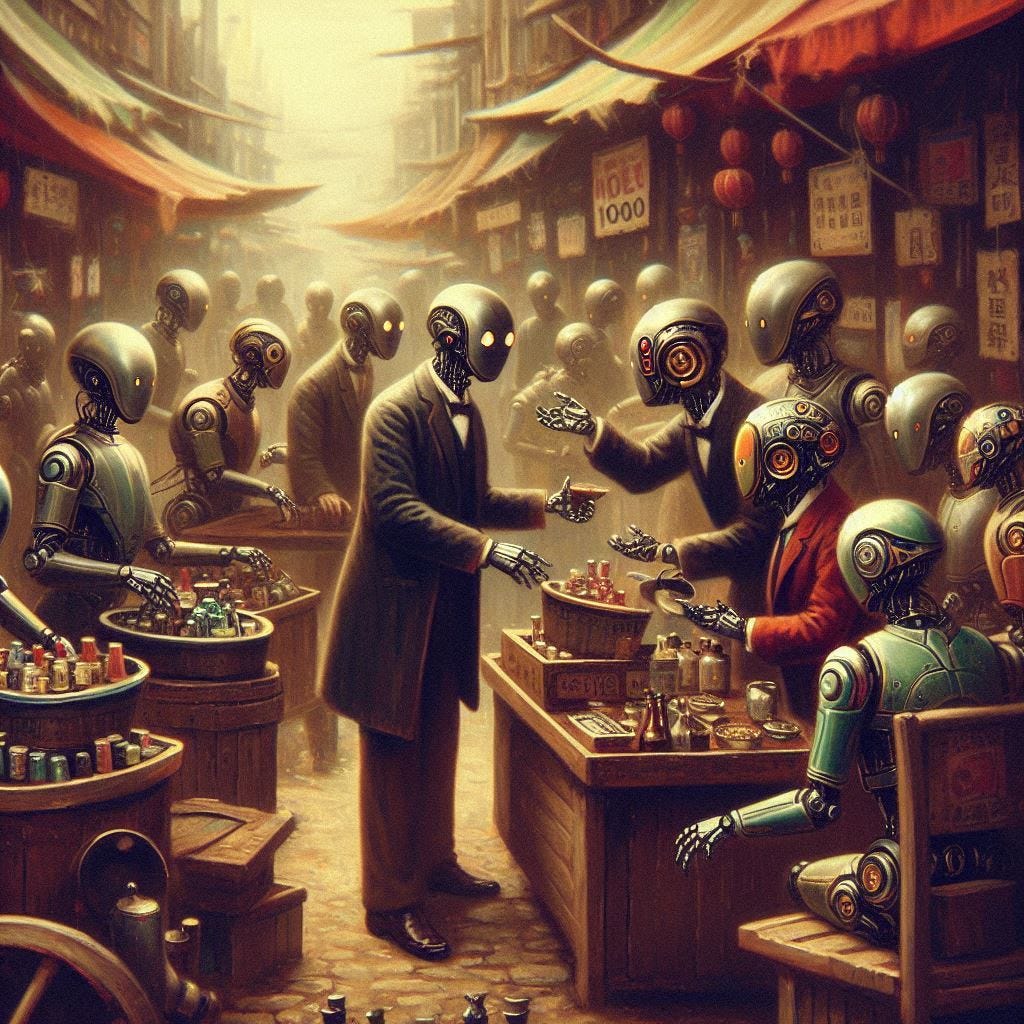The US-China Chip War Twist, AI Classrooms, and Africa's Airtime Economy
Some of July's big stories, overlooked stories, and random stories
Trading chips
In a move that flabbergasted a lot of policy wonks all over the country, President Trump OK’d the sale of Nvidia Chips to China, reversing a policy his administration implemented last April.
The administration said Nvidia would be allowed to sell the H20 chip after licenses are granted by the Commerce Department, according to the company. Nvidia said it would resume deliveries soon of the chip, which was designed for Chinese customers and has been a top seller in the country since 2024.
In addition, Huang said Nvidia has developed a new AI chip for China that he said would be useful for factory automation and logistics. (WSJ)
It seems at odds that the PRC, while being generally viewed as an adversary by many across the political spectrum, should receive a reprieve from the very commodity that may help them “win the AI race” with all the follow-on national security implications that come with that.
at Consensus Drift has a good analysis of the possible reasons behind the policy change. His post is worth the full read, but here are his top-line points:1. A Strategic Tradeoff? “The Trump administration may have judged that the risks of allowing China access to a downgraded AI chip were outweighed by the urgency of restoring U.S. access to rare earth magnets.”
2. AI Strategy Adrift? “By tying access to [export] controls to a commodity-for-chip swap, the administration risks reframing [export controls] as flexible instruments of diplomacy rather than principled tools of containment.”
3. A Return to Integration Over Isolation? “Rather than wall China off, many in the tech world have long argued that it’s smarter to keep China tethered to the U.S. tech stack. The idea is that even downgraded U.S. tools create dependence, and dependence creates leverage.”
4. A Concession to Industry? “…it may have been reframed internally as a necessary concession to stabilize a strategically critical U.S. firm (not its market cap but its competitive product position vis-a-via Chinese competitors”
Despite this move (unclear if there are winners or losers), the mistrust between the PRC and the U.S. persists. On August 1st, “The Cyberspace Administration of China summoned Nvidia to address concerns that its H20 AI chips have backdoors, after a US proposal called for advanced semiconductors sold overseas to have tracking capabilities.” (Semafor)
Two other great articles on the Chip trade:
The Rest of World’s piece on how Vietnam may come out as a winner in the U.S.-PRC Chip Trade War
- ’s AEI post on how the semiconductor trade works. This piece is also available on his Substack:
We don’t need no education
The conversations around AI in education are mostly centered around how to tell if students are cheating or if schools should be teaching kids “the skills of the future.”
What is rarely discussed, until now, is the complete outsourcing of teaching to AI. The problem includes inefficient teaching models, students being held back by peers, and the need for one-on-one bespoke tutoring. So, rationally, parents in Austin, Texas have pushed for an increase in school funding to hire more teachers and raise their salaries, thereby attracting more talent, and have launched a disruptive tech company outsourcing most of the teaching to AI that allocates 2 hours a day toward learning. (NYTimes)
This two hour learning model frees up students for other collaboration and “It is not a “screen school,” the founder insists.
This Austin school is hardly alone, however. The idea that more tailored help can achieve better results for students is not new, but others are saying that using chatbots comes at a cost—connectedness. This idea isn’t simply a tech-doomer mantra, but is being proven in psychological studies. When students exchange one-on-one coaching for chatbots, they lose social capital, which is essential for networking into jobs later in life, obtaining letters of recommendation, and forming social bonds. (The Markup)
China is also dealing with the same general education problems as the U.S.
Some schools, mainly urban ones, are over-resourced, while rural schools remain under-resourced. The PRC is hoping AI can level this playing field. Because the PRC has an exam-focused education system (progress to the next level is focused almost entirely on test scores, and teachers are evaluated on these as well, so naturally, teachers focus lessons to obtain the highest test scores), the AI experiment is leading to different results. Read this China Talk article for a deeper understanding of what is happening with AI and education in the PRC.
If you appreciate my articles, please consider giving them a like. It's a simple gesture that doesn't cost you anything, but it goes a long way in promoting this post. You can also always subscribe and share:
African airtime
Crypto is new, but trading in alternatives is not. Prisoners have used cigarettes as currency, a 6-pack and pizza will buy a friend’s help moving a couch, and I’m sure most millennials have used Pokémon cards to barter at one point or another. In Africa, “airtime,” a form of prepaid calling time, is a common currency. It began in the 1990s as a solution to sell cellphone services to the low-income continent, but continues to this day:
Today, more than two decades later, airtime is huge in Africa.
In the first nine months of 2023, over ₦2.6 trillion (~$6.3 billion) was spent on airtime and data
In Kenya, people spend KSh 3.4 billion a month on airtime.
And the average South African spends R132 ($7.4) every time they top up their airtime.
[…]
According to the GSMA, over 70% of Africans have used airtime for something other than calls and data in the last five years.
In Cameroon and the DRC, some churches collect tithes in the form of airtime.
In Somalia, people send airtime to relatives in rural areas, who then sell it for cash.
And some African businesses use airtime as rewards for surveys, referrals, and promotional programs.
This Tech Safari story is worth reading as it explores how airtime has become digitized and traded, and how other micro-payments work on the continent. If you enjoy this story or some other African technology stories I’ve written about, most of them are thanks to this newsletter. You can click on this referral link and sign up for Tech Safari directly.
In other news
NIST Makes First Detection of Cannabis in Breath From Edibles
Jury Says Tesla Was Partly to Blame for Fatal Crash. “The jury found that Tesla bore 33 percent responsibility for the crash, and blamed the driver, George Brian McGee, for the remainder.” Tesla could end up having to pay $243 million in damages.
Citizen Scientists Are Accelerating Ecology Research, Study Suggests. “Thousands of scientific papers have used data collected by users of the platform iNaturalist, according to new research.”
Henry Farrell posted a “Political Economy of AI” syllabus on his Substack. I’ve not gone through it all, but I’ve leaned on his work before, and he has a knack for distilling complex topics into manageable lessons. I didn’t see many non-Western sources on there, so in addition to Tech Safari linked above, I frequent “Rest of World” for a more global perspective.



